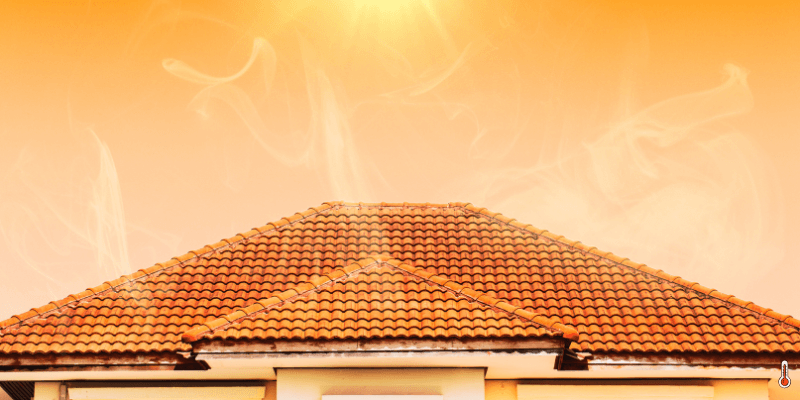You might not think much about your attic, even if all or part of it is usable space. But it plays a big role in keeping your entire home comfortable and energy-efficient. Proper attic ventilation helps regulate temperature and control moisture. It also helps keep you and your family safe and even prevents costly damage over time.
Here’s why good attic ventilation is so important and how it helps create a healthier, safer home.
1. Keeps Temperatures Balanced Year-Round

If your attic doesn’t have adequate ventilation, it can reach scorching temperatures in summer, as much as 160°F. And that trapped heat doesn’t just stay up there. It heats up your living spaces, too.
Your electrical system can also be affected if you have wiring or circuit breakers in your attic. The heat can cause damage and lead to malfunctions and even electrical fires.
In winter, poor attic ventilation allows heat from the living area to rise and warm the roof. A warm roof melts snow, which drips down over the unheated eaves and refreezes, creating an ice dam that repeatedly blocks melted snow. Water and ice can damage shingles and exterior woodwork, cause leaks, decay soffits, and even allow pest infestations.
2. Prevents Mold and Moisture Buildup

Good attic ventilation is essential to guard against moisture. But normal cooking and showering add moisture to the air that can seep into the attic. And if you need to use a humidifier, that can increase moisture even more. A certain amount of humidity adds comfort for most people, but it can be hard on a house.
If moist air can’t escape, it can condense on cold surfaces in your attic. It’s an ideal environment for mold growth. You might not see it or even smell it, especially in the early stages. But mold can damage wood and insulation and affect indoor air quality.
Attic ventilation allows moisture to escape before it turns into a problem.
3. Improves Energy Efficiency
A well-ventilated attic helps maintain consistent temperatures throughout your home, especially in summer. That means your HVAC system doesn’t have to work overtime to keep things comfortable.
Combined with good insulation, ventilation can reduce your overall energy usage and save you money year-round.
It’s a small improvement that adds up to a big impact on your home’s efficiency and comfort.
4. Attic Ventilation Extends the Life of Your Roof
Heat and moisture are two of the leading causes of roof deterioration. By maintaining adequate attic airflow, you reduce stress on roofing materials and prevent premature wear and damage.
Do you have a new roof and a warranty? A new home also comes with a roof warranty. In either case, be sure you meet and maintain the requirements, since many manufacturers have specific attic ventilation requirements.
Building and zoning codes also have ventilation standards, so you’ll want to be sure to match them, especially if you plan to sell your home.
5. How to Know If Your Attic Has Proper Ventilation
Not sure if your attic ventilation is doing its job? Here are a few signs your attic may not be properly vented:
- Your attic feels extremely hot in summer or damp and humid in any season
- You notice condensation (tiny beads of water) or frost on rafters
- Mold or mildew is visible on insulation or wood
- You notice a musty odor
- Ice dams form along the roof’s edge in winter
- Your energy bills are unusually high
If any of these issues sound like your attic, it might be time for a professional inspection.
How WIN Home Inspection Can Help
At WIN Home Inspection, our certified inspectors check attic ventilation, insulation, and moisture levels during a Full Home Inspection or Home Maintenance Check. We use tools like infrared (IR) scanners and moisture meters to detect hidden issues before they become serious.
By identifying ventilation concerns early, we help you maintain a healthier, more energy-efficient home, year after year.
Key Takeaway
Attic ventilation isn’t just about air flow. It’s about protecting your home, your comfort, and your health. With the right balance of intake and exhaust vents in your attic, you can prevent mold, reduce energy costs, and extend the life of your roof.
Get the Latest Insights!
Sign up to stay up to date with latest tips, trends and updates from WIN.













